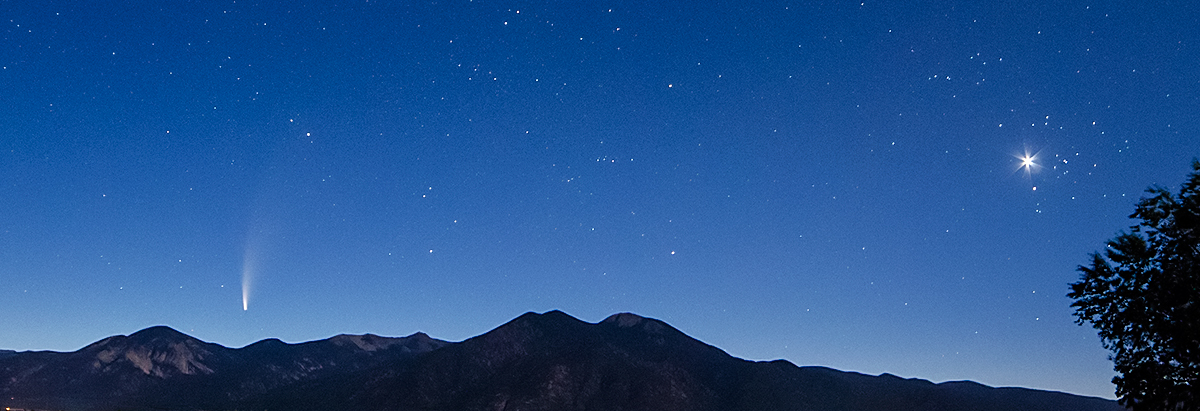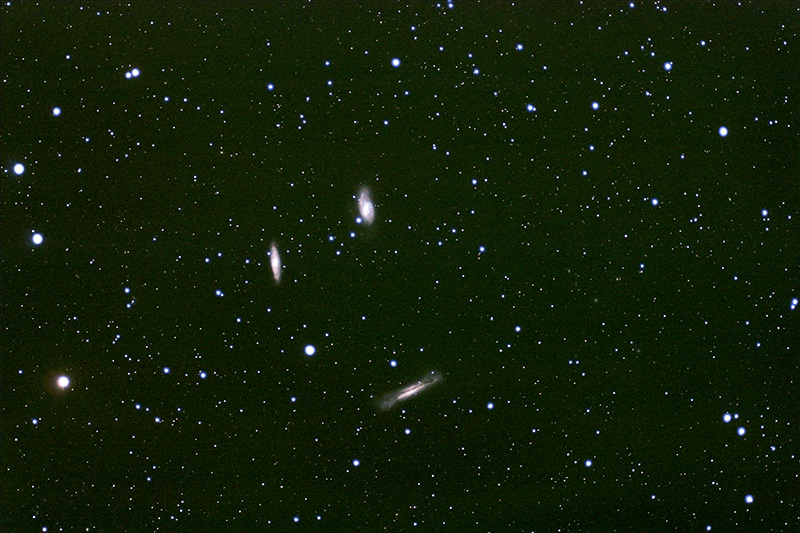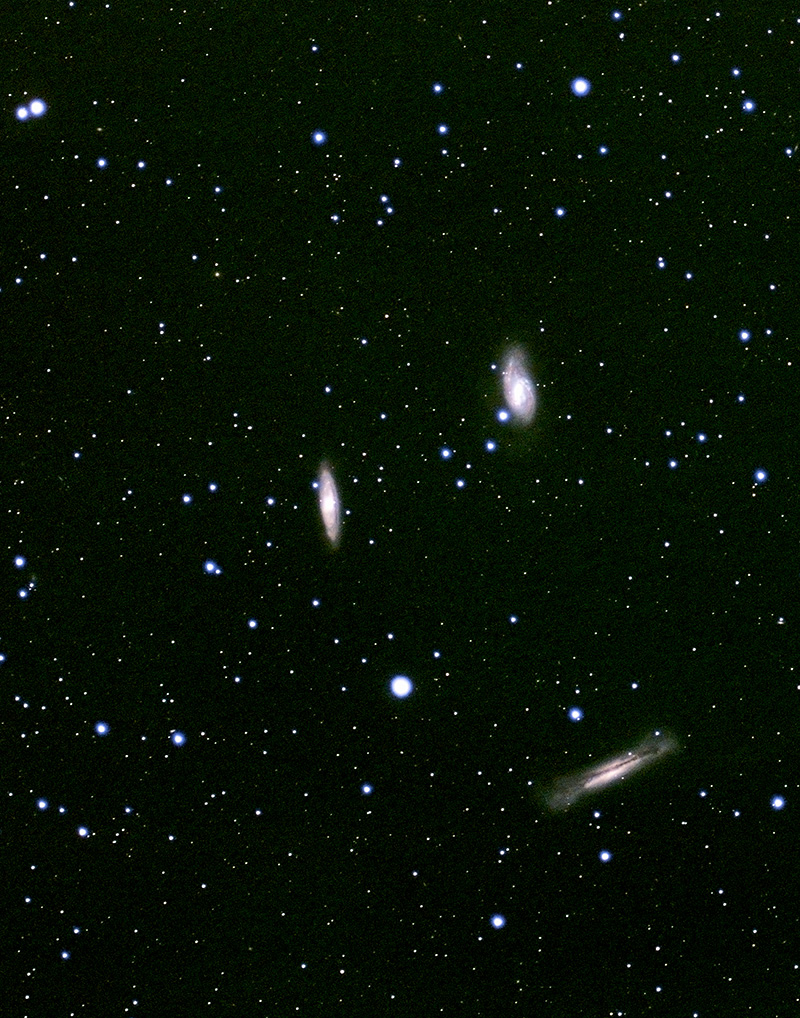
Welcome to taosastronomer.com!
offering
local "hands-on" observing
(visual and imaging) sessions and instruction
viewing and imaging from Rabbit Valley Observatory
a dark sky location on the mesa just west of Taos, NM
 |
Image obtained May17/18, 2015 through RVO's Megrez 80mm refractor with Orion field-flattener lens, using a Baader-modified Canon XSi DSLR and BackyardEOS image-acquisition software -- 12 selected and stacked 360-second luminance frames combined with multiple dark, flat and bias calibration frames shot at ISO 1600 and totaling almost 200 minutes (72 minutes effective luminance) were used to create this image; optics driven by the Losmandy G-11 mount equipped with Ovision's precision RA worm gear, guided with an Orion SSG3 Monochrome CCD camera using Maxim DL Pro and post-processed with DeepSkyStacker and Photoshop CS3. "In the constellation of Leo the Lion, a group of distant galaxies stands out supreme known as the Galaxy Trio in Leo. In the 1960s, Caltech astronomer Halton Arp included this galaxy group in his famous Atlas of Peculiar Galaxies as Arp 317. These galaxies lie at a distance of 35 million light-years. M65 is at the lower right of this image (upper left in my images) with tight spiral arms, similar to our own Milky Way Galaxy. M66, at the lower left, (upper right in my shots) has had its spiral arms distorted, probably due to the interaction with M65. NGC3828, at the top, (bottom in my astrophotographs) is an “edge-on” spiral galaxy, with a broad band of interstellar dust obscuring the central disk. For an inhabitant of any of the galaxies, the views of the other galaxies would be spectacular, covering as much of the sky as one of our constellations!" -- from The 100 Best Astrophotography Targets by Ruben Kier -- this linked text is just excellent for the choice of objects to photography, and the strategy of acquiring the image and post-processing it -- I highly recommend the book! [copyright Rabbit Valley Observatory/Willis Greiner, 2015 -- all rights reserved] |
 |
Image obtained May17/18, 2015 through RVO's Megrez 80mm refractor with Orion field-flattener lens, using a Baader-modified Canon XSi DSLR and BackyardEOS image-acquisition software -- 12 selected and stacked 360-second luminance frames combined with multiple dark, flat and bias calibration frames shot at ISO 1600 and totaling almost 200 minutes (72 minutes effective luminance) were used to create this image; optics driven by the Losmandy G-11 mount equipped with Ovision's precision RA worm gear, guided with an Orion SSG3 Monochrome CCD camera using Maxim DL Pro and post-processed with DeepSkyStacker and Photoshop CS3. [copyright Rabbit Valley Observatory/Willis Greiner, 2015 -- all rights reserved] |
(all content copyright 2015-2019 Willis Greiner Photography, all rights reserved)